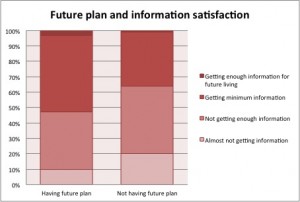Since the catastrophic earthquake disaster, business matching transactions on the internet have brought a significant amount of supports to the disaster area. This article reports the current movement of the internet matching transactions.
The strength of using the internet matching has been in its capability to make one-to-many connections. “Security Fund for Disaster Area Support” by Music Securities Inc. has proved the strength. Accepting 10,000 yen as a minimum amount for investment, the fund got more than 27,000 participants and secured more than 1.1 billion yen to support 36 companies.
At a Japanese cloud funding site of “READYFOR?” and a famous donation site of “Just Giving”, people could participate in supporting any projects or organizations whichever they wanted to help with a small amount of 500 yen or 1,000 yen. Both are characterized as excellent support sites that could collect and accumulate many of small pieces of force. However, as the heat on the reconstruction support activities being cooled down, they are facing difficulty to create further impacts to enhance the support activities. As a result, new movements are emerging to tie people who have strong wills and wishes on one-on-one basis.
An industry-academia-government joint initiative of Iwate Prefecture “Iwate Tomorrow Design Organization” started a web-site “The Iwate Sanriku Reconstruction Bridging Project” to connect people that want to help and the people who need in disaster area. A regional base of Yamada town named “Free Cafe”, as an example, introduced the Starbucks Coffee as a source of coffee beans to be used for food services in the area. The point of this case is that the one-on-one ties enable the two parties to build up the medium- to long-term relationship.
“Innovation Tohoku”, which was formed up under Initiatives of Google Inc., is connecting organizations and businesses enterprises in Tohoku to the supporters who own necessary skills. It is notable that Innovation Tohoku places the Coordinator at seven locations (as of July, 2013) in the disaster area. Up until now, business organizations have stood up first seeking for help. On the contrary, with the Innovation Tohoku arrangement, the coordinators who know regional situations find demands first and recommend appropriate supports to meet the needs. With this approach, a broader spread of support destination is expected.
Both of the platforms above are prepared for the medium to long term cooperation. It is also unique that they allow people and organizations to participate in support activities at any time. More than two years having passed since the earthquake, we have learnt that the reconstruction from the disaster can’t be completed so fast in such a short period of time. These types of business matching services have been developed to enable smaller groups of people to continue support activities for a longer period.
Written in Japanese by Retz Fujisawa (RCF Reconstruction Support Team)
Translated by Akio Saito






